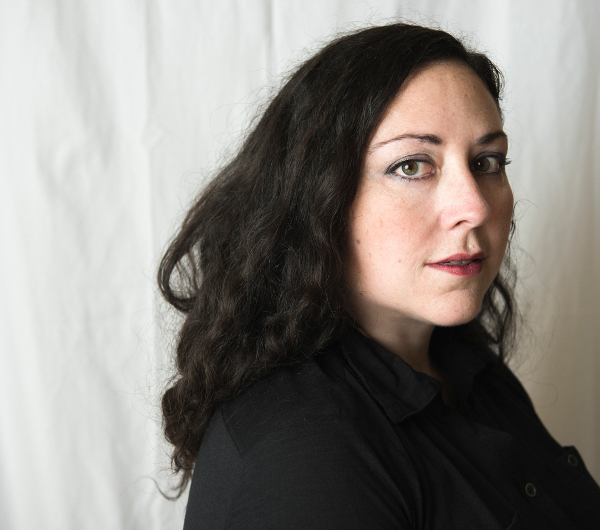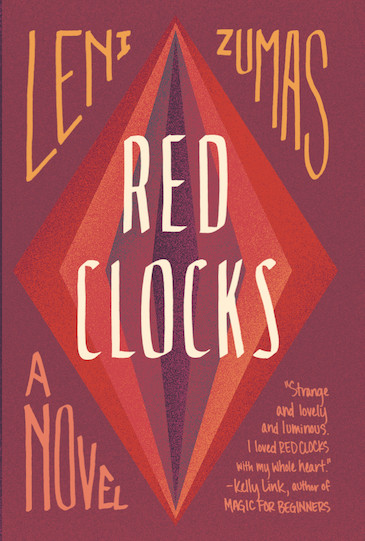Portland author Leni Zumas talks about witches, the Arctic, and her new dystopian novel Red Clocks
“The sea does not ask for permission or wait for instruction,” Leni Zumas writes in the opening pages of her new novel, Red Clocks (Little, Brown & Co., $25.98 US). “It doesn’t suffer from not knowing what, exactly, it is meant to do … The water heaves up for reasons they don’t have names for.” As in her previous works—the story collection Farewell Navigator and the novel The Listeners—Zumas uses language that is by turns playful, precise, forceful, delicate, and anarchic to describe the ineffable. Red Clocks surges and foams around the reader like the ocean it describes, and submerges the reader in the worries, rebellions, and epiphanies of five women: the Mender, the Daughter, the Biographer, the Wife, and the Polar Explorer.
Red Clocks takes place in a not-so-distant American dystopia in which all forms of abortion have been outlawed, and through this premise illuminates a world that clearly mirrors our own: one where women are both feared for the dark power that patriarchal masculinity imagines they contain, and urged into a social mold whose outcome is learned helplessness. Red Clocks is the story of a polar expedition, an abortion seeker’s flight across the border, and a modern-day witch trial in a coastal Oregon town. It is a yarn that will have readers questioning a society that has made the act of being a girl or woman not just a liability, but a crime.
I spoke to Zumas recently in a coffee shop in Portland, Oregon. What follows is an edited transcript of our conversation.
I’ve noticed a lot of writers and artists talking about how 2017 was a difficult year to live in and create in America, and to try to engage with politics through art. What has the last year been like for you?
I spent the beginning of 2017 revising Red Clocks, and had been revising it during the run-up to the election. And it felt really awful, for a while, to be working on the book. Details that seemed far-fetched when I first wrote them—like locking up thirteen-year-olds who sought abortions—now seemed plausible. They are plausible. In an early version of the Republican tax bill, there was a provision for fertilized eggs to have college-savings accounts. Even if Roe v. Wade remains intact, abortion may still become, for all intents and purposes, inaccessible. We’re already seeing this happen for women who are low income and/or live in rural places.
After Trump’s election, I felt so jolted, so deeply sad. The stakes of writing a novel about reproductive rights felt suddenly much higher. For instance, the scene in an underground health clinic—when I first wrote it, my approach was a lot broader, more satirical. But then I started thinking about the fact that this kind of place might be necessary in the actual world.
It’s not that I removed all humor or satire from Red Clocks, or that I stopped caring about sentence-level concerns like rhythm, syntax, acoustics, sonic affiliations. But some of the choices took on a new gravity. Sometimes I’ll approach a scene as though anything under the sun could happen—like, “Oh, I could imagine some funny hippies running an underground clinic for women, or I could imagine a boy with a pet dragon!” But what if, in real life, the Department of Health and Human services declared that all dogs would be slaughtered and replaced by dragons? Then I’m paying more serious attention to what it would mean to see someone walking down the street with a dragon on a leash.
Even before Trump was elected, but certainly since, I wanted the white characters in Red Clocks—the Daughter in particular—to become aware of their own whiteness. I wanted the Daughter to question the ways white privilege operates in the world. Once I started researching Oregon’s past, I realized how much white supremacy is at the core of our state history. Some truly grotesque systematic racism has held sway in Oregon.
Why do you think the witch inspires such anxiety in American culture?
Wow, we could talk for hours about this one! One reason, maybe, is that the witch stands outside of the capitalist order. A witch’s body, at least the version most frequently imagined, is no longer—or never was—reproductive. It’s not making more consumers or workers. The witch does not serve capitalism’s needs.
What was it like to conceptualize a modern-day witch trial?
Many Americans, including myself, have a totally false understanding of how courtroom trials work, because we’re basing it on movies and television. The novelist Gabriel Urza, my colleague at Portland State, used to be a public defender, and he helpfully reminded me that most trials are really quite boring—they don’t have that Freytag’s pyramid rhythm we see on TV.
There also seems to be, in both witch trials and contemporary criminal trials with female defendants, the idea that a woman on the stand is immediately readable: we should be able to see her cry and know she’s innocent, or see her look evil and know she’s guilty. Red Clocks seems to me to be about a woman’s right not to be readable, to not make her body useful, and about her right to be alone.
Those ideas are core to this book! I wanted to interrogate the notion that there must be something defective about a woman who chooses to be unproductive or illegible. Why can’t solitude be just another valid path to follow? Why is the response so often, “What’s wrong with you?”
One of the five women Red Clocks follows is an Arctic explorer and ice scientist. There’s something, to me, that’s always been strangely soothing about imagining the Arctic. What does it do for you?
A danger that’s tangible and immediate, versus the free-floating anxieties I walk around with in daily life, is very appealing. Polar environments make manifest the promise of death—and the sublime. And I’m drawn to the energy of a group of people who face a common peril. I gave the Polar Explorer character the line, “If wrecked in this vessel, we wreck together.” I didn’t mean for that to be symbolic of the other characters in Red Clocks, but later on, I realized that it was. What does it mean to be confronting danger on a ship (or the Earth itself) with other people who are subject to the same danger?
I believe that our individual selves are interconnected in ways we don’t often think about or acknowledge. If you’re in a group survival situation, you get to experience this interdependence in a heightened way. You’re not competing with the others—well, unless you’re competing for resources, or eating their flesh. [Laughs] But in most circumstances, you want them to be their best selves, because that will ensure your survival. Your navigator had better be a good navigator.
I keep hoping that American women are approaching, or already experiencing, that kind of moment of grace: that realization that we can no longer play by the rules if we are going to survive on this ship, and we have to band together and share our resources and make daggers. We need to acknowledge that the pack ice is all around us.
Before it gets to the point where we eat each other’s flesh.
Right.
I’m so curious about what’s going to unfold in the wake of #MeToo. I hope we all acknowledge our debt to the women who went before, who made this moment possible. We’ve inherited so much from those who struggled in the ‘90s, the ‘70s, the 1910s, etc.
We’re using fossil fuel from the women who have lived and died and been furious before us.
The other day I saw a bumper sticker: “Our grandmothers were the witches you couldn’t burn.” I like the line, but I’m not sure what it means. It could potentially support a more complacent stance of “Phew, that’s over! We’ve done it. We’ve broken through”—when we haven’t. There’s still so much to do.
Sarah Marshall’s nonfiction has appeared in The Believer, The New Republic, The Best American Nonrequired Reading 2015, and The Week, where she is a contributing writer.
Did you find this article interesting or informative? Then please take a moment to support Cascadia Magazine so we can continue publishing quality writing on topics you care about.


